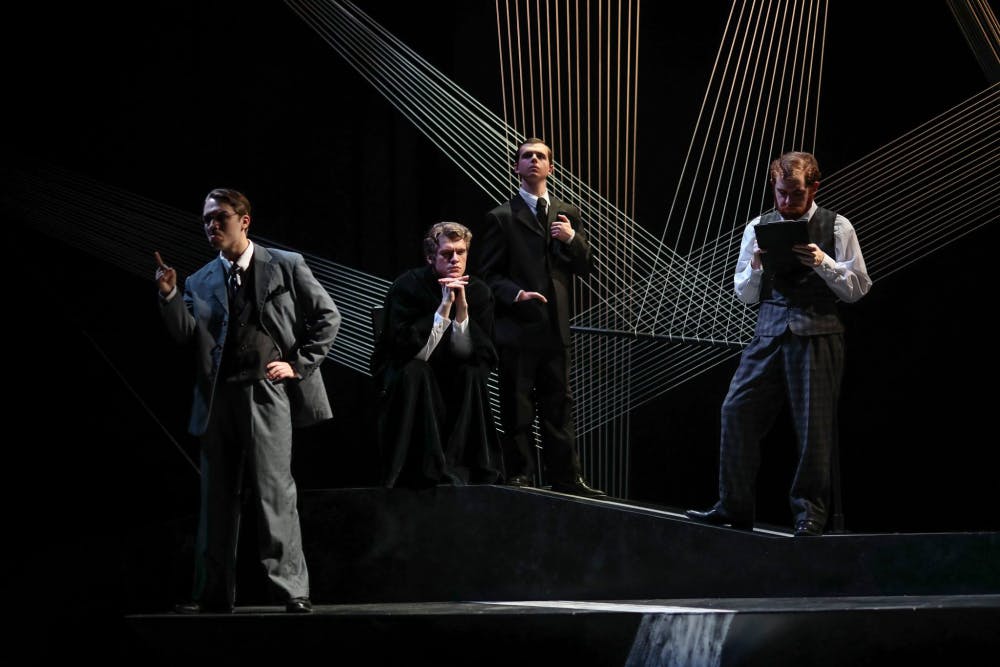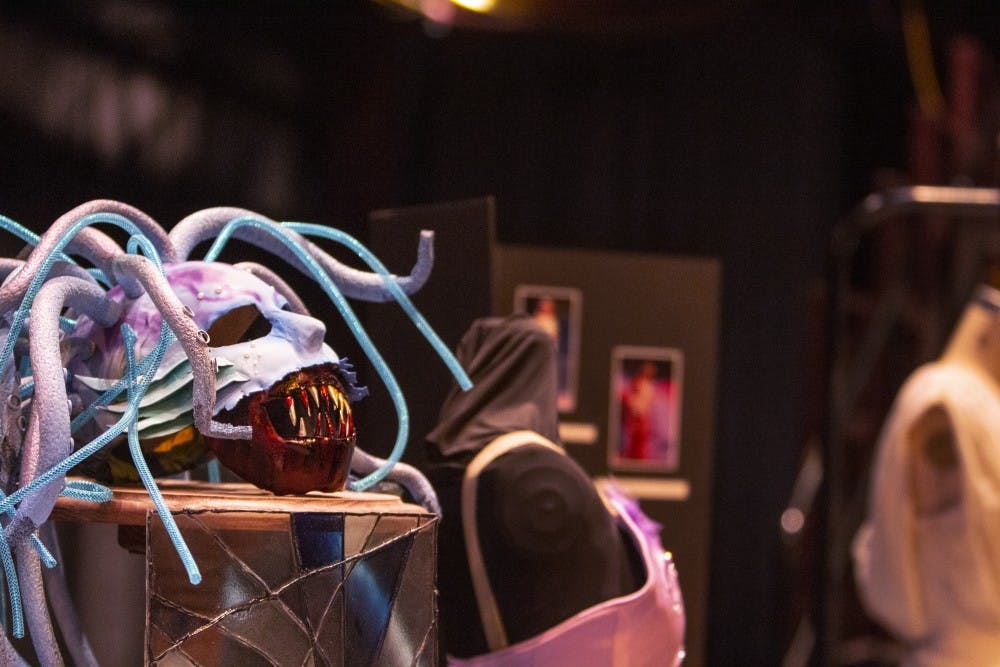For IU’s production of the play “Only Child,” first year MFA costume designer Erin Barnett built a crown. It’s thin and wiry, crude and childlike — ridiculous compared to any actual crown. The play’s child protagonist, who is manipulated by a predatory teacher, wears it for the entire show.
“It’s childlike, it’s been created,” Barnett said. “It gives you that essence of, ‘Something’s off.’”
IU’s theater designers and technologists showcased their work on previous productions from IU and elsewhere at the Design and Technology Portfolio Open House on Wednesday at the Wells-Metz Theatre.
Barnett said the idea for the wiry crown came to her after understanding the relationship between the child, who the show calls the Prince, and the predatory teacher.
“She sees the Prince as this person that she controls, in this cage, so I thought of the idea of the wire,” she said.
Barnett said when she approaches costume design, she dissects the script, speaks with directors and performs research to figure out how to approach costuming.
“What’s the story we’re going to tell, what’s the theme we’re going to emphasize?” she said.
Second year costume technologist Ellis Greer creates the costumes that designers like Barnett plan. She, along with other costume drapers, decide what to build, print and buy.
She said she loves what she can say with costumes that don’t need words.
“I am in theater because I love stories,” she said. “This is how I use my voice — through fabric, through texture, through shapes of costumes. It’s going to create a conversation.”
Jeremy Smith, third year MFA student in scenic design, uses set design to tell the story. He designed the set for IU’s productions of “Machinal,” “Pippin” and “Wonderful Town,” all of which feature strong, prominent installations — buildings, stained glass fixtures and so on.
IU’s production of “Machinal” featured taut strings mixing the stage space and the audience space.
Smith said the strings create a sense of tension and visual danger.

“The installations make the audience feel like they’re also in the play,” Smith said.
Between six to eight months before “Machinal,” Smith designed a quarter-inch scale model of the Wells-Metz Theatre with his plans for the set. The design is vast and vacant, using darkness and space in an abstract way inspired by German expressionism.
“I don’t give people walls, I don’t give people doors,” Smith said. “I give them chain. From one direction, it looks like a disco ball, and from another direction, it’s like we're in a wartime shelter, or it looks like a cage on the southern border. By not giving the audience answers, you’re able to make them ask more questions about what’s happening in the world around them .”
Barrian Brimberry, third year MFA candidate in lighting design, said her work in lighting supports the action on stage when it isn’t enough to show a character being sad.
“The whole, ‘Oh, it’s a sad scene, make it blue;’ but what kind of blue? Is it a green-blue, a red-blue?” she said.
Brimberry said she is inspired by Kehinde Wiley, the artist who painted Barack Obama’s official portrait in 2017. The painting features Obama against a striking floral background, creating an effect Brimberry said she looks for in the way she lights staged work.
“His use of background is amazing,” she said. “I try to take inspiration from exploring different ways to put people against things.”
Brimberry’s work on IU’s productions of “Machinal” and “Titus Andronicus” often put characters against vast swaths of black or under colored lights, depending on the emotion of the scene.
“Lighting is that weird thing in the air that tells you, ‘This is the world,’” she said. “You can suggest certain things every time you throw out this color.”
Brimberry said her work in lighting is founded on the idea of human connection.
“That’s what the basis of it all is,” she said. “My job is to support that and create this world.”




